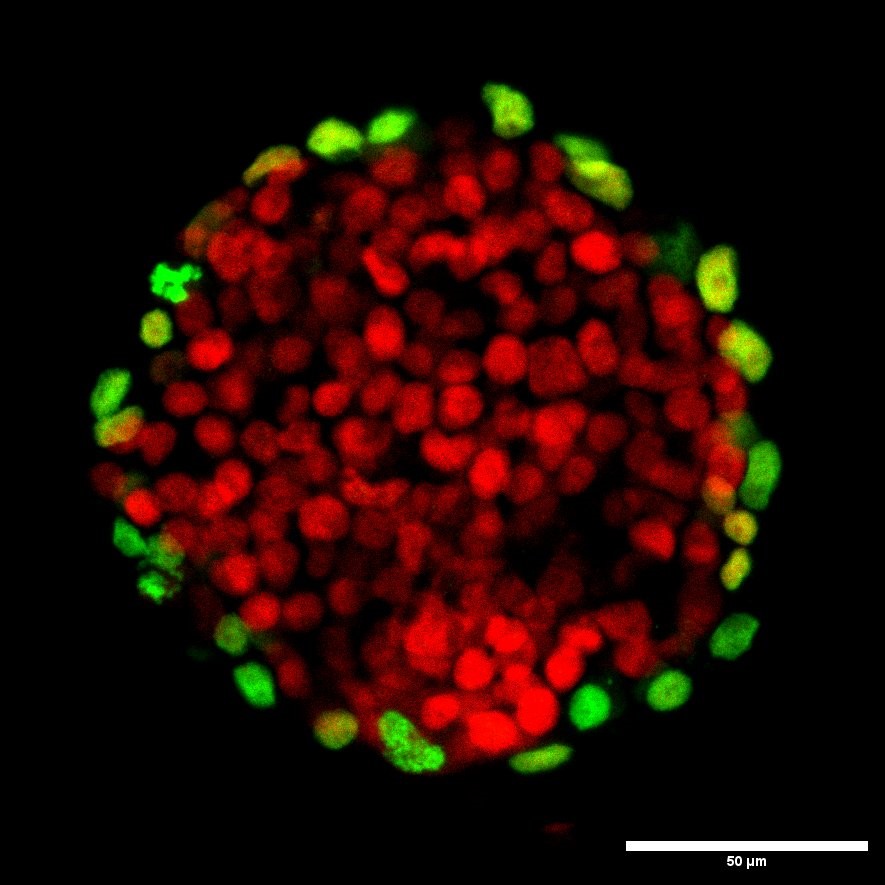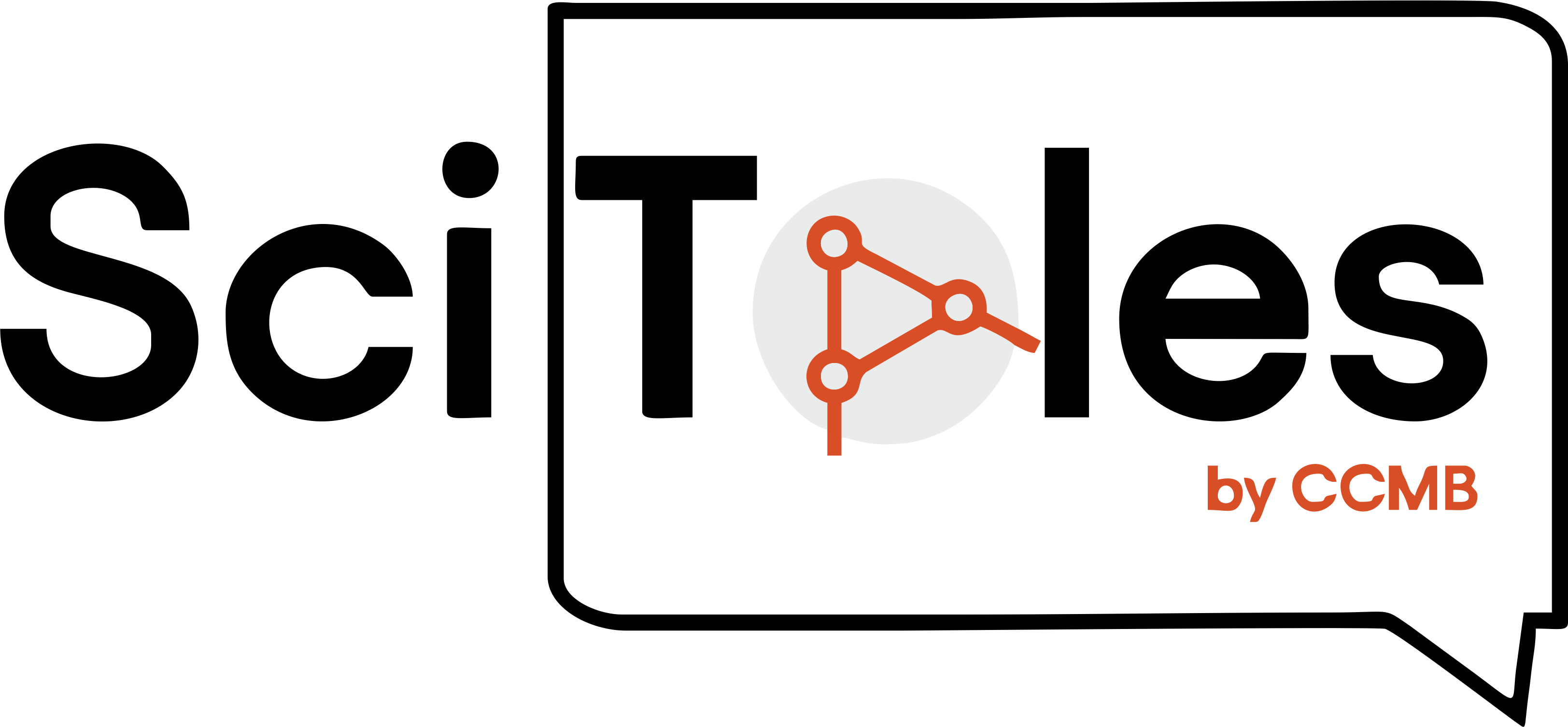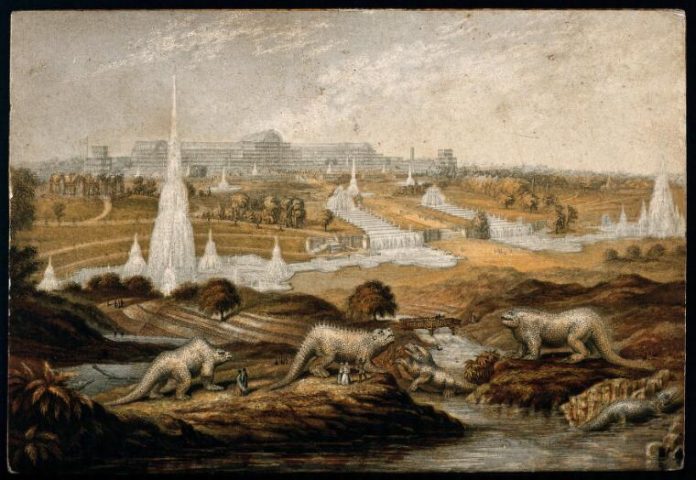The Crystal Palace from the Great Exhibition, installed at Sydenham: sculptures of prehistoric creatures in the foreground. Colour Baxter-process print by G. Baxter, 1864(?). Credit: Wellcome Collection. Public Domain Mark
What if, instead of watching colorful birds painting the sky, you were to swerve to hide from the flying dinosaurs with razor-sharp teeth? Or if you were to see dodos waddling about or gigantic wooly mammoths stomping all around you. Certainly, these are strange scenarios to imagine but with more advancements in cell and molecular biology, we could quite possibly bring back many animals from extinction.
Critical to the idea of de-extinction is the process by which we can recreate a cell from a pre-existing cell or “cloning”. In a nutshell, a clone is any organism that is an exact genetic copy of another organism. The first successful attempt to artificially clone a cell was when Hans Driesch was able to separate a two-celled embryo of a sea urchin into two, simply by shaking it. Each cell could now become an independent embryo. Such cells are difficult to culture in the lab. Another type of cell called embryonic stem cells can be derived from embryos and cultured in the laboratory.
Embryonic stem cells can principally become an embryo and have the capacity to grow into any organ of the body. Eventually, the embryo becomes a complex network of cells but most of these cells are not stem cells anymore. They take up distinct identities and live with the same identity throughout their life. Even if they divide, they give rise to another cell with the same identity. These are called somatic cells.
When we think about bringing back extinct species, the problem is the cells that we find of these life forms, largely from fossils. And they are adult somatic cells. While there are many studies that detail how embryonic stem cells differentiate into multiple kinds of cells in our bodies, the reverse idea is rather recent.
Scientists have found that the process of differentiation of stem cells involves chemical modifications on certain genes. These modifications render certain genes active or inactive. Scientists are now able to revert these modifications, and thus, convert regular body cells (or non-embryonic cells) to form cells similar to embryonic stem cells, called induced pluripotent stem cells. These cells can then be again grown into embryoid bodies and synthetic embryo-like structures called blastoids.

So now that we have some tools for making synthetic embryos from cells, why is it that we still don’t see mammoths and dodos walking about? This is where the catch comes.
First, synthetic embryos do not have the complete ability to develop into an organism.
Second, not all the genetic material of dead species is perfectly preserved in the fossils we find. Therefore, regenerating such a species with “holes” in the DNA will cause mutations that weren’t present in the living organism. This will cause errors in the code that don’t reflect the DNA of the original organism, and hence, its form and function too. The errors might not even allow making a surviving life form.
Third, while embryonic cells are ready to activate any gene, differentiated adult cells have shut down the genes that they don’t need for their specific functions. So, when DNA from an adult cell is used, its genetic information must be “reset” to an embryonic state. This has been made possible by Yamanaka and Takahashi, by adding special proteins called reprogramming transcription factors into an extracted body cell using a retrovirus. These factors can change the activity status of the genes in an adult cell to embryo-like.
If one is able to do all of this, the next step is to inject their DNA into a de-nucleated egg cell (an egg cell that has had its genetic material removed) and implant it in a surrogate closely related to the animal one is trying to grow. This technique of nuclear transfer allows the successful development of live offspring and enables the egg cytoplasm to control embryo and fetal development. This sort of technique has in fact been seen before in one of the most famous transgenic animals, Dolly, the sheep. But often the resetting process is incomplete, and the embryos fail to develop or have chromosomal abnormalities. Even Dolly was the only attempt out of 277, who was carried to term in the surrogate.
In spite of all these shortcomings, researchers are pushing through to identify the roles of crucial molecules that define stem and somatic cells, and engineering different technologies to convert one to the other. Perhaps, using them we could one day see living animals that had been obliterated, even before our existence. Maybe we can even use this knowledge to figure out a way of rescuing species from endangerment that are at risk of complete extinction. Maybe all of this, with the power of engineering cells.
We thank Dr P Chandra Shekar at CCMB for his expert comments on the article.


